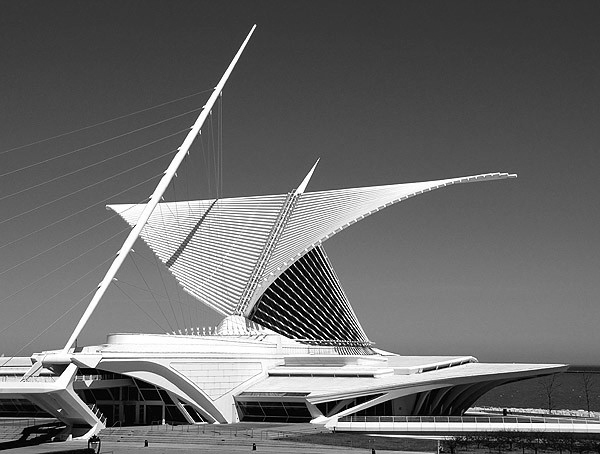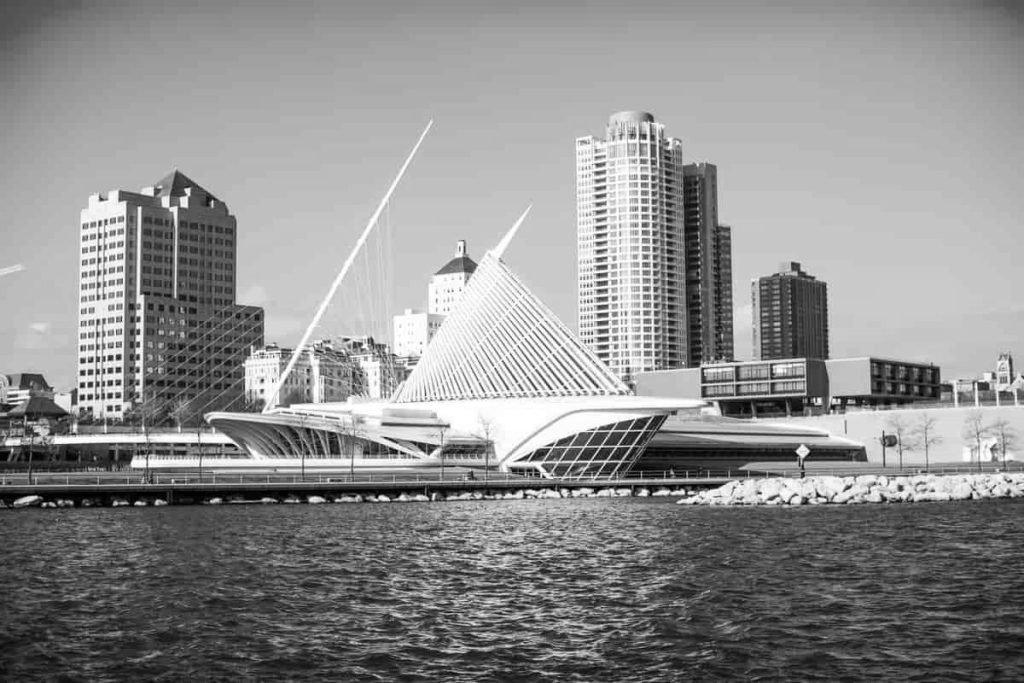Milwaukee Art Museum: A Masterpiece of Modern Architecture
The icy winds of Lake Michigan whipped through downtown Milwaukee as Will Hunter approached the Milwaukee Art Museum. Standing majestically on the lakefront, the building was an immediate and undeniable landmark. Designed by the renowned architect Santiago Calatrava, the museum’s Quadracci Pavilion soared into view, its iconic white wings extending towards the sky like a majestic bird taking flight.
.
Will was captivated. The building was not merely a structure; it was a sculpture, a dynamic interplay of form and function that seemed to breathe and respond to the ever-changing light and weather. “It’s alive,” Will thought, mesmerized by the precision and grace of the unfolding motion as the massive, movable “wings” – known as the brise soleil – began to open, a breathtaking spectacle of engineering and artistry.
.
Inside, the grandeur of the museum took his breath away. The vaulted ceiling of the Windhover Hall rose like the hull of a ship, its ribbed structure emphasizing the space’s verticality and creating a sense of awe and wonder. Light poured through expansive glass walls, offering panoramic views of Lake Michigan, blurring the lines between the interior and exterior spaces. The interplay of curves and angles, the interplay of light and shadow, created a dynamic and ever-changing environment that was as much a work of art as the exhibits it housed.
.
A docent approached, sensing Will’s fascination. “Calatrava is both an architect and an engineer,” she explained, her voice filled with admiration. “His work transcends traditional boundaries, seamlessly blending artistry with engineering, form with function.” She gestured towards the brise soleil. “It’s not just an aesthetic element; it’s a sophisticated engineering feat, designed to reduce heat and glare while providing natural ventilation and enhancing energy efficiency.”
.
As Will wandered through the museum’s galleries, he noticed how the architecture itself seemed to guide the visitor experience. The flowing lines of the building, the carefully orchestrated interplay of light and shadow, created a sense of movement and discovery, encouraging visitors to explore and engage with the art on display. The Milwaukee Art Museum was not simply a container for art; it was an integral part of the art experience itself.
.
Later, Will walked onto the Reiman Bridge, a sleek pedestrian walkway designed by Calatrava that connected the museum to the city. Suspended by cables, the bridge seemed to float above the ground, offering a symbolic connection between the museum and the vibrant urban landscape.
.
As the sun began to set, casting long shadows across the lake, the brise soleil began to close, the “wings” folding gently over the pavilion like a bird preparing to roost. For Will, the Milwaukee Art Museum was more than just a building; it was a testament to the power of human ingenuity and creativity, a testament to the transformative power of architecture to inspire, uplift, and connect.
Learning Points:
- The Genius of Santiago Calatrava: Exploring the unique architectural style of Santiago Calatrava, characterized by its dramatic forms, innovative use of materials, and integration of engineering and artistry.
- The Design Philosophy of the Milwaukee Art Museum: Understanding the key design principles behind the Milwaukee Art Museum, including its emphasis on light, space, and the connection between the building and its natural surroundings.
- The Role of Architecture in Enhancing the Art Experience: Examining how the architectural design of the Milwaukee Art Museum enhances the visitor experience, creating a dynamic and engaging environment for viewing and appreciating art.
- The Integration of Art and Technology: Exploring the innovative use of technology in the design of the Milwaukee Art Museum, such as the kinetic “wings” that respond to the changing light and weather conditions.
- The Impact of Architecture on Urban Landscapes: Understanding how iconic buildings like the Milwaukee Art Museum can contribute to the cultural and economic vitality of a city.
Keywords:
- Milwaukee Art Museum
- Santiago Calatrava
- Modern Architecture
- Architectural Design
- Museum Architecture
- Kinetic Architecture
- Public Art
- Urban Design
- Art and Architecture
- Sustainability in Architecture
- Cultural Centers
- Milwaukee
- Wisconsin
This fictional story is set within the dreams of Will Hunter, a character created to explore the intersection of imagination and design. Dive into his dreamscape and discover how storytelling can illuminate real-world lessons in architecture and creativity.
Some of the links on this website may be affiliate links. This means that if you click on the link and make a purchase, we may receive a small commission. We only recommend products and services that we genuinely believe will be beneficial to our readers.





